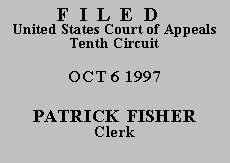

| EDWARD L. HILL,
Plaintiff-Appellant, v. JOHN J. CALLAHAN, Acting Commissioner, Social Security Administration,(*) Defendant-Appellee. |
|
Plaintiff appeals the district court order affirming the denial of plaintiff's application for social security disability benefits. In what became the final decision of the Commissioner, the administrative law judge (ALJ) found that plaintiff's gouty arthritis in his left foot and ankle and his hypertension constituted severe impairments that prevented plaintiff from performing his past relevant work, which was heavy to light and required prolonged standing or walking. The ALJ further found, however, that plaintiff could perform a full range of sedentary work despite his severe impairments. The ALJ then applied the vocational-medical guidelines at step five of the sequential analysis, see 40 C.F.R. § 404.1520, and determined that plaintiff was not disabled. We affirm.
Plaintiff raises only one issue on appeal: whether the ALJ properly evaluated his allegations of pain. We review the Commissioner's decision to determine whether the correct legal standards were applied and whether the findings are supported by substantial evidence in the record viewed as a whole. See Castellano v. Secretary of Health & Human Servs., 26 F.3d 1027, 1028 (10th Cir. 1994). "If supported by substantial evidence, the [Commissioner's] findings are conclusive and must be affirmed." Sisco v. United States Dep't of Health & Human Servs., 10 F.3d 739, 741 (10th Cir. 1993). Substantial evidence is "such relevant evidence as a reasonable mind might accept as adequate to support a conclusion." Richardson v. Perales, 402 U.S. 389, 401 (1971) (quotation omitted). "In evaluating the appeal, we neither reweigh the evidence nor substitute our judgment for that of the agency." Casias v. Secretary of Health & Human Servs., 933 F.2d 799, 800 (10th Cir. 1991).
In evaluating the effect of plaintiff's alleged pain on his ability to work, the ALJ first considered whether plaintiff's pain was, in and of itself, disabling. The ALJ followed the analytical framework we set forth in Luna v. Bowen, 834 F.2d 161, 163-66 (10th Cir. 1987), which first requires the ALJ to determine whether objective medical evidence establishes that the claimant has an impairment capable of producing pain Id. at 163. If the claimant has such an impairment, the ALJ must then determine whether the claimant has established at least a loose nexus between that impairment and the kind of pain alleged. Id. Finally, the ALJ must consider all the evidence, both objective and subjective, to decide whether he believes the claimant's allegations of disabling pain. Id.
At the final step of the analysis, the ALJ should consider a variety of factors, including a claimant's "regular use of crutches or a cane," id. at 165-66, "the possibility that psychological disorders combine with physical problems," id. at 166, and "the claimant's daily activities," id. Here, the ALJ specifically mentioned these three factors in his assessment of plaintiff's allegations of disabling pain, as well as the fact that plaintiff's impairment had not, to date, required surgical treatment. Based on the evidence as a whole, the ALJ concluded that while plaintiff experienced some pain, his pain was not disabling.
The ALJ then considered whether plaintiff's nondisabling pain constituted a nonexertional impairment that otherwise limited his ability to work. The ALJ concluded that plaintiff's pain prevented him from performing light to heavy physical demands, but that it did not limit his ability to perform a full range of sedentary work.
Plaintiff's arguments notwithstanding, our review shows that the ALJ applied the correct legal standards in assessing plaintiff's allegations of pain, and the record fully supports both the ALJ's determination that plaintiff's pain is not disabling and his determination that plaintiff's pain does not limit his ability to perform a full range of sedentary work. Therefore, the ALJ, and ultimately the Commissioner, properly determined that plaintiff was not disabled and denied his application for disability benefits.
The judgment of the United States District Court for the Northern District of Oklahoma is AFFIRMED.
Entered for the Court
Circuit Judge
*. Effective March 31, 1995, the functions of the Secretary of Health and Human Services in social security cases were transferred to the Commissioner of Social Security. P.L. No. 103-296. Pursuant to Fed. R. App. P. 43(c), John J. Callahan, Acting Commissioner of Social Security, is substituted for Donna E. Shalala, Secretary of Health and Human Services, as the defendant in this action.
**. This order and judgment is not binding precedent, except under the doctrines of law of the case, res judicata, and collateral estoppel. The court generally disfavors the citation of orders and judgments; nevertheless, an order and judgment may be cited under the terms and conditions of 10th Cir. R. 36.3.